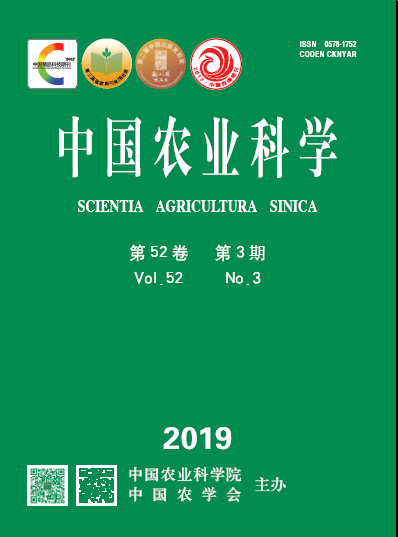【Objective】 In oasis irrigation agricultural region, some problems has caused serious influenced of maize production, such as soil available water and nitrogen hunger, premature senescence and unreasonable planting density. To provide technical support for high and stable maize yield, the effects of different ratio of application irrigation and nitrogen and planting density on photosynthesis, dry matter accumulation characteristics and maize yield were studied. 【Method】 Photosynthetic ability, dry matter accumulation characteristics and yield were determined under two-years field experiment, which was carried out in Hexi Oasis irrigation region of Gansu province from 2016 to 2017. In this research, the cultivar “Xianyu335” was applied as research material. A split-split plot design was used as this experiment, with two irrigation application amount treatments (namely 4 050 m 3·hm -2 (W1) and 3 720 m 3·hm -2 (W2)) as the main plot, three nitrogen application amount treatments (namely 0 (N0), 300 kg·hm -2(N1) and 450 kg·hm -2 (N2)) as the split plot, and three plant densities (namely 7.5×10 4 plant/hm 2(D1), 9.75×10 4 plant/hm 2(D2) and 1.2×10 5 plant/hm 2(D3)) as the split-split plot. 【Result】 Nitrogen fertilizer application and planting density had significant influence on photosynthetic rate, maximum dry matter accumulation rate, emergence days of maximum dry matter accumulation rate, dry matter accumulation amount, grain yield, water use efficiency and nitrogen fertilizer use rate in growth stages of maize. The coupling of irrigation and nitrogen fertilizer management increased photosynthesis, the highest dry matter accumulation rate and advanced the days of emergence of the highest dry matter accumulation rate, and enhanced dry matter accumulation amount and grain yield in growth stages of maize. Under the reduced 20% irrigation and the level of higher nitrogen application in growth stages of maize, compared with the low planting density and high planting density treatments, the photosynthetic rate under the medium planting density treatment was increased by 17.31% and 11.43%, respectively. While, compared with the low planting density treatment, the maximum dry matter accumulation rate and days of emergence of the highest dry matter accumulation rate under the treatment with the high planting density and medium planting density was increased by 21.07% and 7.52%, respectively, and advanced by 6.7, 4.1 days, respectively, meanwhile, the dry matter accumulation of the high planting density treatment was increased by 4.27% and 10.59%, respectively; Compared with the low planting density treatment and the high planting density treatment, the grain yield, water use efficiency and nitrogen fertilizer use rate of maize with the medium planting density treatment was increased by 24.2%, 11.4%, 29.9% and 29.2%, 18.4%, 13.8%, respectively. Under the reduced 20% irrigation and same planting density treatment in growth stages of maize, compared with medium nitrogen application treatment and no nitrogen application treatment, the photosynthetic rate, the dry matter accumulation and grain yield of maize under the treatment with high nitrogen application treatment was increased by 7.34%, 11.63%, 14.63% and 49.54%, 44.53%, 69.03%, under the medium planting density treatment, respectively; Compared with medium nitrogen application treatment and no nitrogen application treatment, the maximum dry matter accumulation rate and days of emergence of the highest dry matter accumulation rate of maize with the high nitrogen application treatment was increased by 19.07% and 54.35% and advanced by 3.9 and 6.8 days under the high planting density treatment, respectively. Compared with no nitrogen application treatment, nitrogen fertilizer use rate of maize with the high nitrogen application treatment was increased by 24.50%. The facts showed that the coupling of reduced 20% irrigation and high nitrogen application had regulated dry matter accumulation, grain yield with the improvement of photosynthesis, dry matter accumulation rate, water use efficiency, nitrogen fertilizer use rate and extending the duration of dry matter accumulation. 【Conclusion】 The treatment with application coupling of irrigation and nitrogen (i.e. reduced 20% irrigation amount during growth 3 720 m 3·hm -2(W2) and N application with 450 kg·hm -2 at growth stage and medium density of 9.75×10 4 plant/hm 2 at growth stage of maize) could be considered as the best feasible cultivation pattern management, which could provide technical guidance for further exploring high yield and efficient cultivation of close planting maize in Oasis irrigation region.









